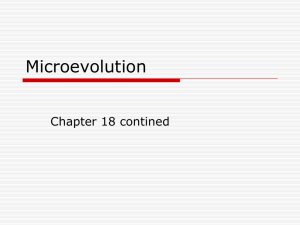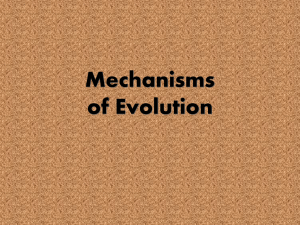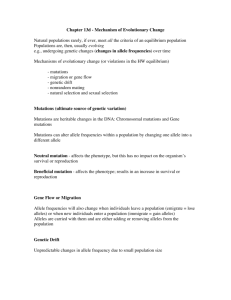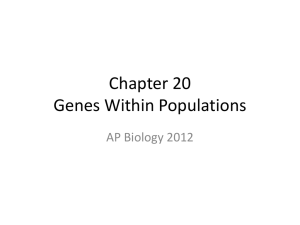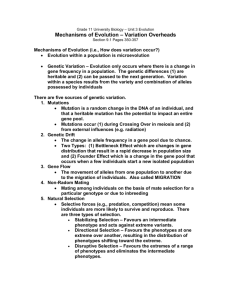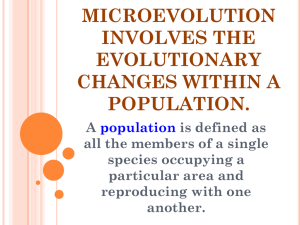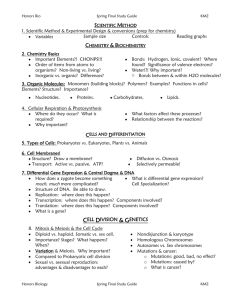Modes of Natural Selection
advertisement
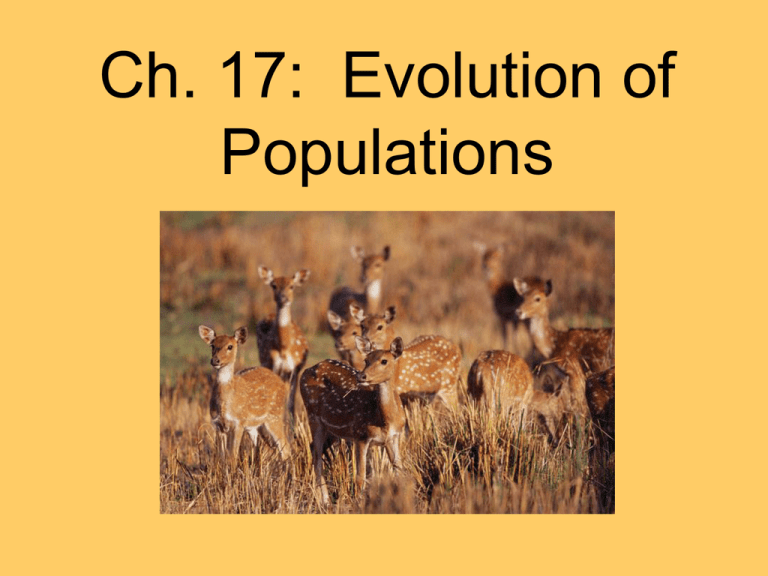
Ch. 17: Evolution of Populations • Natural Selection acts upon an organism’s phenotype, not its genotype • Individuals with favorable phenotypes pass on more copies of their genes to the next generation Evolution is defined as a change in a population’s gene pool over time. A population is a group of individuals of the same species. A population’s gene pool consists of all the genes/alleles that are present in a population. Genotypic and phenotypic “frequencies” What is the frequency of the green phenotype? What is the frequency of the brown phenotype? What is the frequency of the green allele? What is the frequency of the brown allele? Sources of genetic variation: mutations Mutations may increase or decrease one’s fitness. Most mutations are neutral. In order to matter in evolution, they must occur in gametes. Sources of genetic variation: crossing over during meiosis Crossing over does not create new alleles, just new combinations of alleles in individuals. Some traits are controlled by many genes (polygenic) Some traits are controlled by a single gene Five Major Causes of Evolution 1. Natural Selection 2. Genetic Drift 3. Migration 4. Mutations 5. Non-Random Mating 1. Natural Selection Directional Selection—occurs when one extreme phenotype is favored Stabilizing Selection—occurs when the average phenotype is favored Disruptive Selection—occurs when both extreme phenotypes are favored What pattern of selection has occurred? What pattern of selection has occurred? What pattern of selection has occurred? 2. Genetic Drift changes in a population gene pool due to chance events. More likely to occur in a small population. Example 1: Bottleneck Effect Bottleneck effect: a few individuals survive a catastrophic event. The new population has dramatically different gene pool Example 2: Founder Effect When a new population is established by a very small number of individuals from a larger population. Mass Extinctions and Genetic Drift have shaped the history of life on Earth 3. Migration Immigration or emigration between populations changes allele frequencies. 4. Mutations 5. Non-random mating every individual does not have an equal chance of reproduction. An example of NONrandom mating is assortive mating. Sexual Selection http://www.youtube.com/watch?v=SB8UodV_DJg&feature=PlayList&p=B0BD07CF79C23E2D&playnext=1&playnext_from=PL&index=22 (Bird of Paradise) http://www.youtube.com/watch?v=7XiQDgNUEMw (Lyre Bird) http://www.youtube.com/watch?v=gqsMTZQ-pmE&NR=1&feature=fvwp http://www.youtube.com/watch?v=GPbWJPsBPdA (Bower Birds

